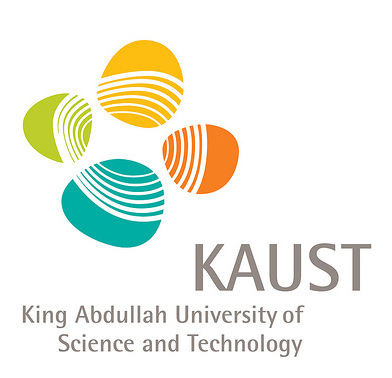 Hewlett Packard Enterprise has announced that King Abdullah University of Science and Technology (KAUST) selected HPE to build its next-generation supercomputer, “Shaheen III,” using the HPE Cray EX supercomputer platform. The company said the system will be fully operational in 2023.
Hewlett Packard Enterprise has announced that King Abdullah University of Science and Technology (KAUST) selected HPE to build its next-generation supercomputer, “Shaheen III,” using the HPE Cray EX supercomputer platform. The company said the system will be fully operational in 2023.
Seven HPE Cray EX4000 cabinets will include 704 GPU compute nodes, and each node will be equipped with 4 NVIDIA Grace Hopper Superchips, which are tightly coupled CPU/GPU accelerators. The system also will be powered by AMD EPYC processors, code-named “Genoa.” Each HPE Cray EX cabinet is equipped with 4608 CPU compute nodes, with two AMD EPYC processors, amounting to 884,736 cores in the entire system.
In all, Shaheen III is designed with 18 HPE Cray EX cabinets and will include HPE Slingshot networking cables delivering Ethernet fabric; closed-loop liquid cooling technology to remove heat from devices, including CPUs, GPUs, memory and switches; the use of HPE’s Cray ClusterStor E1000 storage system with 50 petabytes of storage capacity; and the HPE Machine Learning Development Environment, a training platform built on the open-source foundation laid by Determined AI designed to make it easier to set up, manage, secure and share AI compute clusters.

The system will be used by KAUST for researching clean combustion, Red Sea ecosystems, climate modelling and the Arabian tectonic plate, while delivering analyses, models and simulations. Shaheen III, expected to be 20 times faster than KAUST’s existing system, will be the most powerful supercomputer in the Middle East, according to HPE and KAUST.
“The new HPE Cray EX system will allow us to conduct research on a larger scale, resulting in significant scientific, economic and social advances,” said Dr. Tony F. Chan, President of KAUST. “In line with Vision 2030, we strive to meet the ever-increasing demands of our active and solutions-driven faculty, and also those of external partners, for faster and more efficient computing resources. KAUST supercomputing resources are used by more than half of our faculty, students, postdoctoral students and researchers, and researchers from more than 20 external organizations in the Kingdom.”
 KAUST’s users plan to target a range of applications, including the design of new materials for low-cost/high-performing solar photovoltaics; new industrial catalytic processes to increase energy efficiency while reducing waste; personalized preventative health care and the discovery of new medicines; increased hydrocarbon recovery with reduced environmental and economic costs; and the use of genetic, genomic and epigenetic approaches to enhance plants’ drought tolerance and resiliency in desert environments.
KAUST’s users plan to target a range of applications, including the design of new materials for low-cost/high-performing solar photovoltaics; new industrial catalytic processes to increase energy efficiency while reducing waste; personalized preventative health care and the discovery of new medicines; increased hydrocarbon recovery with reduced environmental and economic costs; and the use of genetic, genomic and epigenetic approaches to enhance plants’ drought tolerance and resiliency in desert environments.
“At HPE, our purpose is to advance the way people live and work, and we are honored to help fuel Saudi Arabia’s Vision 2030 for a new era of innovation by empowering KAUST with a state-of-the-art supercomputer,” said Antonio Neri, president and CEO of Hewlett Packard Enterprise. “Shaheen III will significantly accelerate research at KAUST by applying world-leading supercomputing and AI-at-scale capabilities to increase accuracy in analyses and solve complex scientific questions.”
KAUST said the new system will build on its first supercomputer, Shaheen I, launched in 2009, followed by Shaheen II, a Cray-based supercomputer 25 times faster than its predecessor at 5.54 petaflop/s.
 “Shaheen II has delivered 6.8 billion computing core-hours to more than 1,467 users, resulting in data used in about 1,030 publications to date,” said KAUST Research Computing Core Labs Director Dr. Jysoo Lee. “Shaheen III will ensure that the KAUST community will maintain its edge as a world-class university in computational sciences.”
“Shaheen II has delivered 6.8 billion computing core-hours to more than 1,467 users, resulting in data used in about 1,030 publications to date,” said KAUST Research Computing Core Labs Director Dr. Jysoo Lee. “Shaheen III will ensure that the KAUST community will maintain its edge as a world-class university in computational sciences.”
“AMD is committed to the advancement of scientific research and development in high-performance computing, driving the technology behind computational modeling, simulation and AI,” said Forrest Norrod, Senior Vice President and General Manager, Data Center Solutions Business Group, AMD. “Powered by AMD EPYC processors, Shaheen III will enable new discoveries that will have regional and global impacts across climate, clean energy and tectonic plate modeling, all made possible by the collaboration between KAUST scientists and HPE.”
“As we push deeper into the era of Exascale AI, supercomputers like Shaheen III are increasingly central to transforming society,” said Ian Buck, vice president of hyperscale and HPC at NVIDIA. “Enabled by our deep collaboration with KAUST and HPE, and the adoption of our new Grace Hopper Superchip, Shaheen III will be a key scientific instrument that offers unrivaled performance to help tackle the world’s toughest challenges.”




